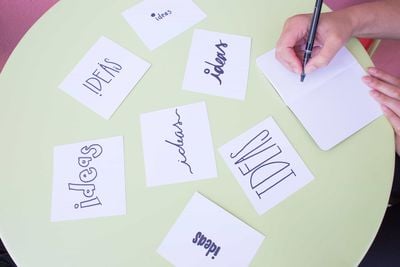Why ESA is Still the Most Effective Methodology in the English Language Classroom

Throughout my ITTT TEFL course a specific teaching concept persisted, entitled "ESA". This methodology has been proven over several years to be effective in teaching English to students in the classroom. A precursor to this concept was "PPP" (Presentation, Practice, Production) which has been used by many teachers, though it lacks in engaging the students resulting in a less successful environment. Jeremy Harmer noticed this and in turn put forth a new and improved model, labeled "ESA", consisting of three steps; Engage, Study, and Activate. This methodology has continued to remain relevant to this day through its flexible and fluid approach to teaching English.
Table of Contents
The Importance of the Engage Phase
The Importance of the Study Phase
The Importance of the Activate Phase
The Flexibility of the ESA Method
Are you ready to implement the ESA teaching method in your own classroom?
This post was written by our TEFL certification graduate Joseph V.
The Importance of the Engage Phase
An engaged student is more likely to participate in class and take the initiative to further their own learning. This may be achieved through a combination of teaching with a positive attitude and using activities that engross the learners. Appealing to a student's interests can facilitate tremendous results and does not mean it is at the expense of relative information. A successful educator will be able to prelude a lesson using alluring means such as music, pictures, or questions that prompt correlating English language. The engage phase of "ESA" is intended to be a lively introduction, grasping attention, and creating a comfortable atmosphere for students and teachers alike. This should then lead to a productive study phase in which the learners are eager to know more and welcome the information taught.

Also read: Top 5 Icebreakers for New TEFL Teachers
The Importance of the Study Phase
The study phase of "ESA" is intended to allow the students to develop their English language skills. Activities such as worksheets or texts to be evaluated, will be provided to accompany the lesson topic. Worksheets may consist of exercises such as crosswords, gap-fill, or unscrambling words. It is important for students to utilize their receptive skills during this phase, absorbing more than they realize while listening to the teacher speak in English and reading instructions and questions within their worksheets. This is the appropriate time to further their understanding of the language, its concepts and to correct any errors that may arise. The students study and familiarize themselves with the subject matter in order to use and activate the language in the next phase.

Also read: 10 Tips for Teaching Grammar to EFL Students Abroad
The Importance of the Activate Phase
Finally, the class should conclude with the activation phase, where the pupils practice what they have learned. This is a critical step, allowing the teacher to observe the intended fruition of the material and assess the success of the lesson. There are several ways to demonstrate the activation of the language whether it be through role-play, content creation, debates or even discussion. This allows for students to employ the language they have learned with each other, prompting participation through productive skills such as speaking or writing. Although a class should finish with an activation step, it does not always mark the end of the lesson.

Also read: 5 Creative Writing Activities for the ESL Classroom
Variations of the ESA Method
The rudimentary form of "ESA" would be the "Straight Arrow", consisting of the above three steps; engage, study, and activate. However, this is not the only applicable form of the methodology, as there are also "ESA" procedures entitled "Boomerang" and "Patchwork" which expand upon the basic form. The "Boomerang" technique is presented as "EASA" and allows for the teacher to determine what the students already know through an activation phase prior to beginning the study phase to limit redundancy in the lesson. Additionally, the "Patchwork" approach may be constructed in several ways, whether it is "EASAESA" or "EAASASEA" as long as the lesson begins with the "E" (Engage) phase, concludes with the "A" (Activate) phase, and effectively educates the students. These supplementary methods provide flexibility for lessons and fluidity for the classroom.

Also read: 7 Awesome ESL Conversation Activities to Really Get Your Students Talking
The Flexibility of the ESA Method
Individual classrooms vary between sizes, language levels, and a multitude of other factors. Therefore, it is up to the teacher to decide and implement the "ESA" methodology in the way they deem appropriate. Jeremy Harmer through his book entitled 'How To Teach English' has influenced English language teachers and learners for the better. Harmer has provided an easy to understand model that has facilitated many in the pursuit of learning English and allows for adaptation to accommodate all levels of language.
Also read: Top Online Lesson Plan Resources for New and Advanced Teachers
Are you ready to implement the ESA teaching method in your own classroom?
Apply now & get certified to teach english abroad!
Speak with an ITTT advisor today to put together your personal plan for teaching English abroad.
Send us an email or call us toll-free at 1-800-490-0531 to speak with an ITTT advisor today.
Related Articles:
- 10 Tips to Help You Enjoy Your TEFL Course
- 7 Fun Activities for Teaching Vocabulary in the ESL Classroom
- Differences in Teaching Monolingual and Multilingual EFL Groups
- Why Taking a TEFL Course Is Highly Beneficial
- How To Write The Perfect ESL Lesson Plan
- 8 Amazing Things You Can Do with a TEFL Certificate



